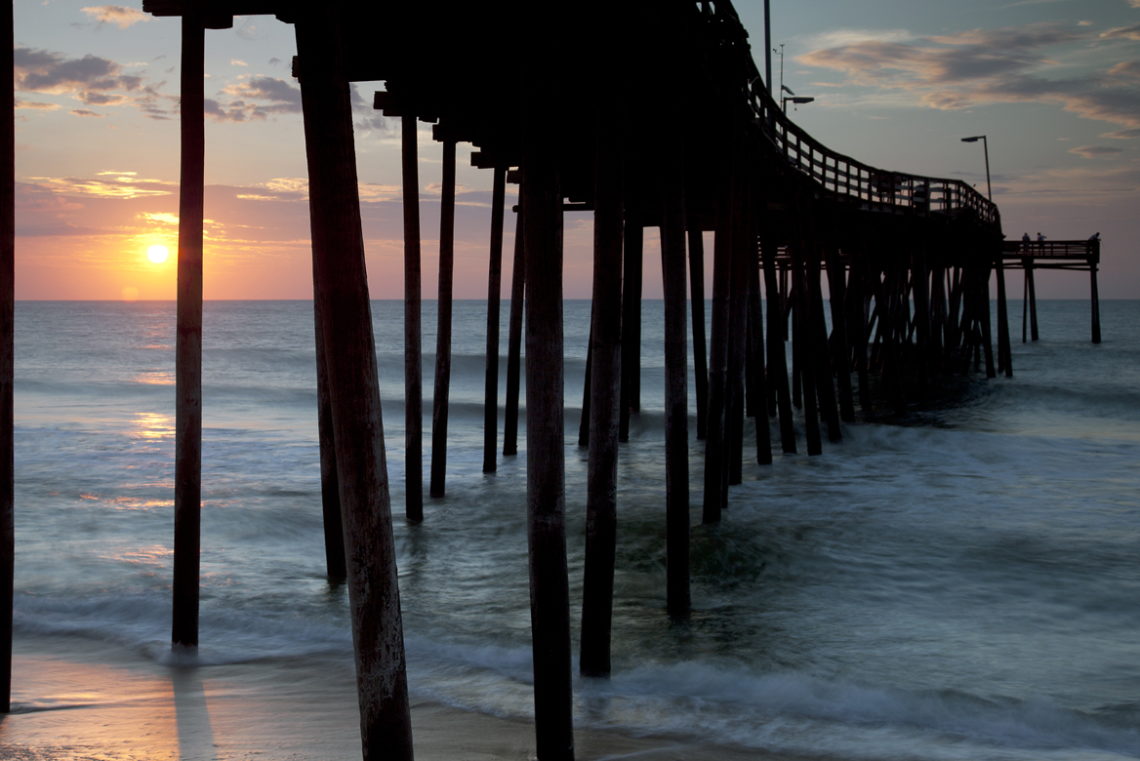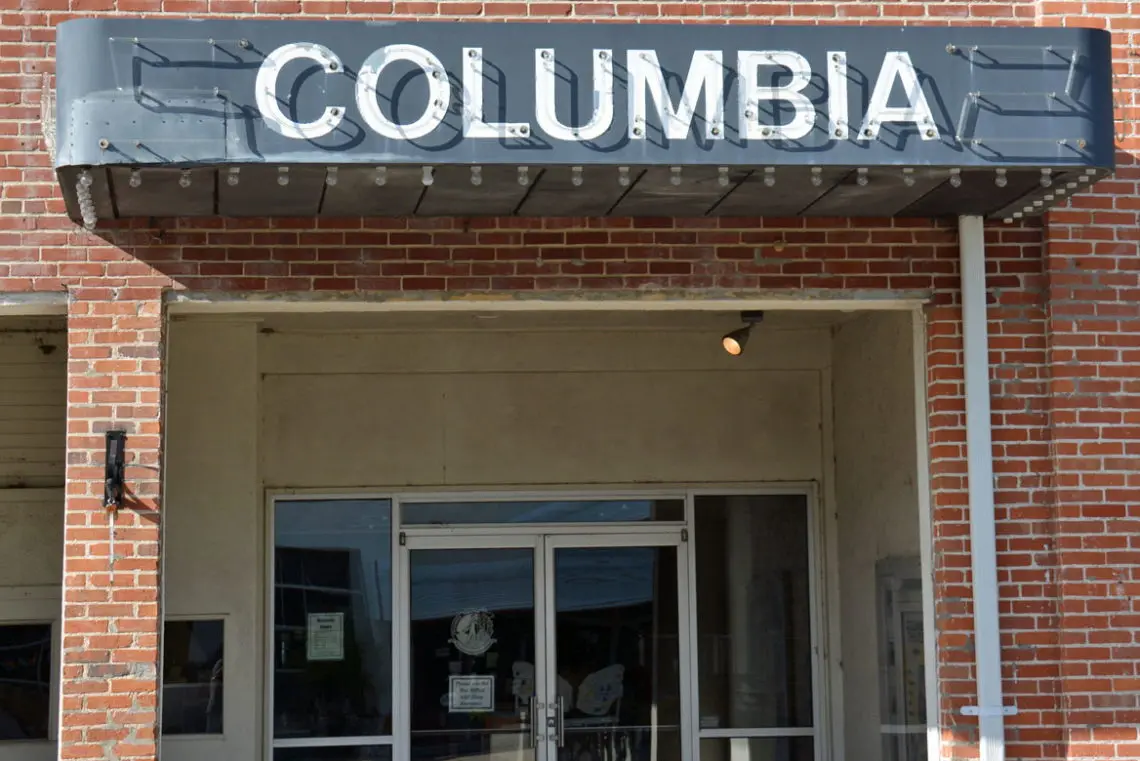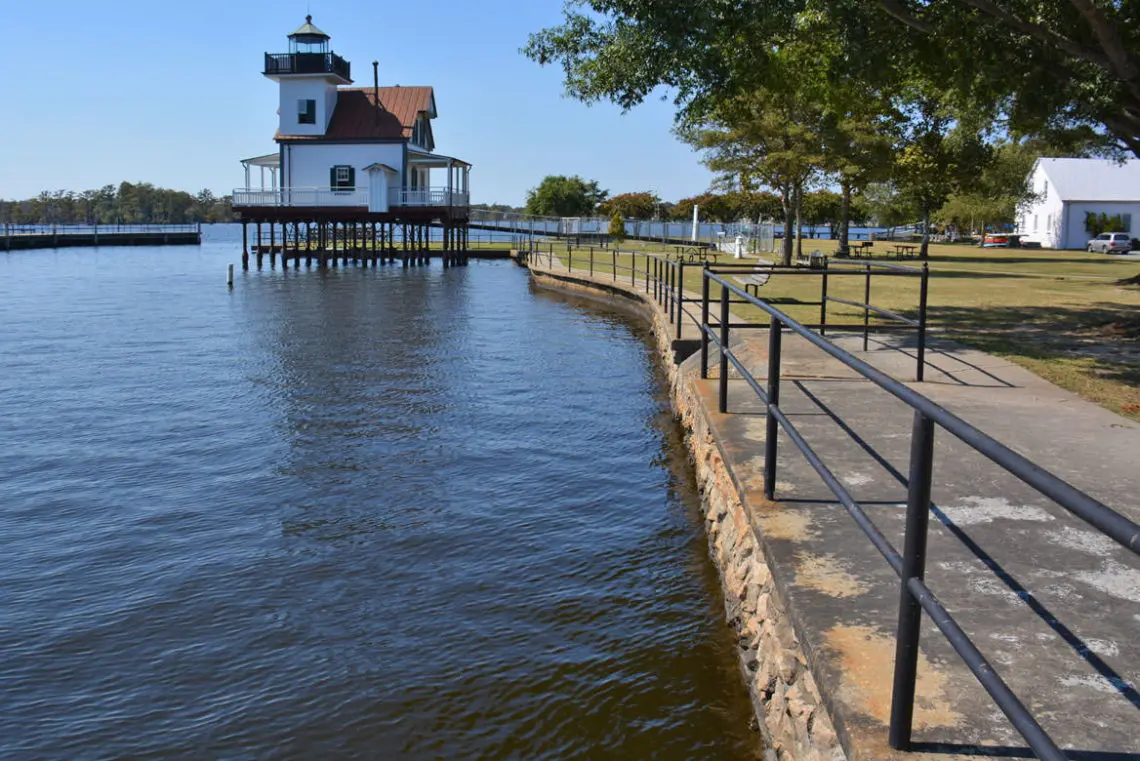In the midst of the metropolitan area known as Hampton Roads, Virginia, and extending well into North Carolina, there is a unique primeval forest inhabited by a variety of mammals, 21 species of reptiles, 58 species of turtles, lizards, salamanders, frogs & toads, and over 200 species of birds, as well as history, mystery and lore... the Great Dismal Swamp.
Cypress Trees in Fall
The Great Dismal Swamp is a geological wonder. For millions of years before the Swamp was formed, it was under the sea. It is viewed by naturalists and other scientists as one of the best outdoor laboratories in the world! This natural treasure emerged as a landform when the Continental Shelf made its last significant shift.
Just who discovered the Great Dismal and when is unknown. Colonel William Byrd II was a member of the commission that surveyed the North Carolina/Virginia state line through the Swamp in 1728 and provided the first extensive description of it. In May 1763, George Washington made his first visit to the Swamp and suggested draining it and digging a north-south canal through it to connect the waters of Chesapeake Bay in Virginia and Albemarle Sound in North Carolina. Joining with several other prominent Virginians and North Carolinians, he formed two syndicates known as the Dismal Swamp Land Company and the Adventurers for Draining the Great Dismal Swamp. This group hoped to drain the Swamp, harvest the trees, and use the land for farming.
The company purchased 40,000 acres of Swamp land for $20,000 in 1763. Washington directed the surveying and digging of the 5-mile long ditch from the western edge of the Swamp to Lake Drummond, known today as Washington Ditch. In the late 1700's, Riddick Ditch was completed. Together these ditches provided a way to transport logs out of the Swamp and drain it as well. The Adventurers soon realized, however, that the task of draining the Swamp was enormous and gave up that part of their plan to concentrate on lumbering. They cut much of the cypress trees for use in shipbuilding and the cedars for shingles and other products.
By 1796, Washington had become disappointed in the management of the Dismal Swamp lumber business and contracted to sell his 1/12th share to "Lighthorse" Harry Lee, father of Robert E. Lee, who never was able to come up with the purchase price. So Washington's share passed on to his heirs upon his death in 1799.
Camp Mfg. Company, a predecessor of Union Camp, acquired all the Dismal Swamp Land Company's property in 1909. Lumbering continued in the Swamp and by the 1950's the last 20,000 acres of virgin timber were removed. In 1973, Union Camp donated its Virginia swamp holdings to the Nature Conservancy which, in turn, deeded it to the Department of the Interior for creation of the Great Dismal Swamp National Wildlife Refuge. The Refuge consists of 107,000 acres of forested wetlands surrounding Lake Drummond, a 3,100 acre natural lake located in the heart of the swamp. William Drummond, the first Governor of North Carolina (1663-1667), discovered the oval lake which still bears his name.
Lake Drummond
Even though the average depth of the lake is only six feet, its unusually pure water is essential to the swamp's survival. The amber-colored water is preserved by tannic acids from the bark of the juniper, gum and cypress trees, prohibiting growth of bacteria. Before the days of refrigeration, water from the Swamp was a highly prized commodity on sailing ships. It was put in kegs and would stay fresh a long time. People spoke of the magical qualities of the Swamp's tea-colored water and how, if it were regularly drunk, it prevented illness and promoted long life.
Windsor & Bertie County
Windsor, the county seat of Bertie County, is located in Northeastern North Carolina between the Roanoke and Chowan Rivers, headwaters of the Albemarle Sound. Windsor is served by major highways and is approximately 85 miles from Roanoke Island and the Outer Banks. Founded in 1768, the town is located on the banks of the Cashie River and is one of the most interesting small historically significant towns in the region.
A stroll along King Street will allow you to see and enjoy many homes and commercial buildings of significance due to their architectural structure. The Historic Windsor Walking Tour is an enjoyable step back through history with beautiful architecturally detailed homes. A study of the historical figures responsible for their construction and their impact on Bertie County history is also a part of the self-guided tour. A number of 18th and 19th century buildings remain in Windsor and the downtown district is listed on the National Register of Historic Places.
Four miles northwest of Windsor is the crown jewel of Bertie County's historic legacy, Hope Plantation. Built in 1803 by Governor David Stone, the plantation receives thousands of visitors each year. Historic Hope Foundation, Inc. manages the plantation which includes the Hope Mansion, the King Bazemore House, the Samuel Cox House, and the Roanoke-Chowan Heritage Center, a state of the art visitor's center with exhibition, research, and banquet facilities.
The Bertie County Courthouse, built in 1887, is listed on the National Register of Historic Places and is included on the Walking Tour. Additions made in 1941 and 1974 enlarged the facility but maintained the style of the original construction. The Courthouse is the center of Bertie County government and houses a wealth of research materials for those searching for their roots here in Northeastern North Carolina.
The Freeman Hotel, built in 1840, embodies the distinctive characteristics of the small hotel once found in many eastern North Carolina towns at the turn of the century. The Hotel is also listed on the National Register and houses the Windsor Area Chamber of Commerce and Visitor's Center.
The Cashie Wetlands Walk has an 1800 foot handicapped accessible walkway to the Cashie River and features a fishing pier at its end. The trees and shrubs in the Walk are labelled for identification. Various wild animals can be seen in their natural habitat, many of which are endangered species, such as the pileated woodpecker.
The Sans Souci Ferry just outside of town is a must-see for the history buff and nature lover alike. The two-car ferry travels across the Cashie River guided by a cable. This ferry is one of the few surviving examples of early river navigation before high rise bridges dotted the riverine landscape.
Once back in Windsor after the short trip to Sans Souci, the Cashie Park is available for fishermen and also has picnic facilities. The Windsor Campground is also located on the river and has a boat launch and comfortable camp sites.
The Cashie River has played a large part in the development of Windsor. The river was responsible for the early commercial development of the town and today provides recreational excitment as well as serving as a classroom to study wetlands, rivers and their wildlife along with their impact on this region. The Cashie River begins and ends within Bertie County and can reach depths of 80 feet!
Visitors are invited to come and explore the early history of Bertie County and enjoy the rivers, streams and hunting grounds as did the Indians and early settlers.
Sound Feet Shoes is family owned and operated. Sound Feet has been in the retail shoe business for over 72 years, opening their first store in 1953. They provide the best customer service and are the only Outer Banks’ area full service shoe...
One of Columbia's "newest" attractions happens to reside in one of its most prestigious old downtown buildings. The Columbia Theater Cultural Resources Center is a widely successful project of the N.C. Department of Environment and Natural Resources...
In the midst of the metropolitan area known as Hampton Roads, Virginia, and extending well into North Carolina, there is a unique primeval forest inhabited by a variety of mammals, 21 species of reptiles, 58 species of turtles, lizards, salamanders...
Visitors to Edenton's Colonial Park will find a veritable world of local attractions and gorgeously scenic landscapes just minutes away from the expansive parking area. A postcard-perfect place to picnic, paddle, or just take off for a leisurely...



